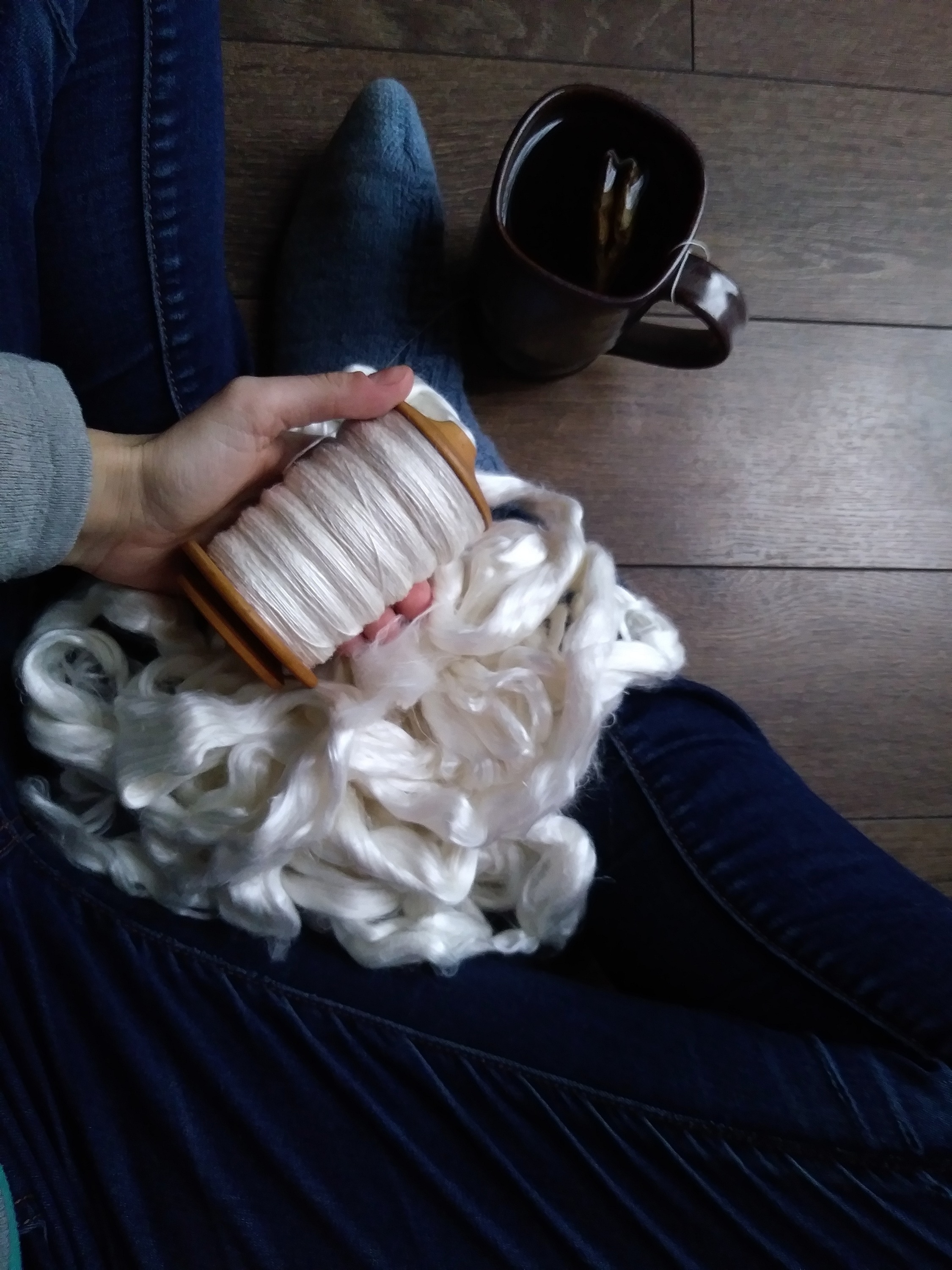Land Acknowledgement and Local Fibre Traditions
- Megan

- Jul 26, 2021
- 4 min read
Updated: Aug 16, 2021
Several years ago, I became interested in the Cowichan Sweater knitting tradition. If you have never heard of the Cowichan Sweaters, they are a traditional style of colourwork sweater knit by Cowichan women from the Cowichan Valley on south Vancouver Island, beginning in the late 1800s. The Cowichan Tribes are part of the Coast Salish peoples who live along the west coast of British Columbia, as well as down into Washington and Oregon. Cowichan Sweaters are traditionally knit from a bulky lightly spun single ply yarn at a very dense gauge, and include motifs such as the thunderbird, orca, or the salmon. Originally only the unyed natural colours of the sheep were used, and the sweaters are knit on many double pointed needles. If you are in Canada, there is a wonderful documentary available from the National Film Board of Canada called The Story of the Coast Salish Knitters, which you can access by signing in on their website via your local library. This documentary really gives you a sense of the economic importance of these sweaters, illustrating how they were a way to keep families fed, as well as showing how the process of learning to make them began in childhood. Otherwise, this interview with Mary Ellen Joe is very informative as well. Generally one person would work from raw wool to finished sweater, first acquiring the wool (including the rare and valuable black wool), washing it, carding, spinning (early on, with a traditional spindle, and later with an Indian Head Spinner), and then knitting.

[Image Description: A photograph of a white woman's hand, with fingernails painted a caramel colour, holding a section of dark brown roving. There are small bits of vegetable matter visible in the roving.]
At first I was excited to make one myself. After all, I am a maker who loves to create things from scratch, learning about the process along the way. But as I learned more, particularly about the role that these sweaters had played in supporting impoverished families, and how these prices have repeatedly been undercut by middle men and replicas, I felt more and more uncomfortable about taking an Indigenous tradition for myself without some sort of financial compensation. Then I set out to find a Cowichan pattern designer, so that I could compensate a native artist for their labour. But all I could find was the book Working With Wool by Sylvia Olsen, who is a white woman married to a Cowichan man with mixed heritage children and grandchildren. I still felt uncomfortable, and I decided to take more time to uncover why before proceeding. After much thought, I have decided that I will not be knitting myself a Cowichan sweater. I cannot currently afford to buy a genuine version for myself, but one day I will be able to. I want to be a part of supporting Indigenous artists, rather than benefiting from theft.
Around the time that I came to this conclusion, I started to wonder about other fibre traditions in my local area. I live in Vancouver, BC on the unceded and traditional territories of the xʷməθkwəy̓əm (Musqueam), Skwxwú7mesh (Squamish), and Səl̓ílwətaʔ/Selilwitulh (Tsleil-Waututh) Nations, who are all members of the Coast Salish people. Knitting was not a traditional fibre art, nor was wool, both of which were brought to the region by European colonizers in the 1800s. Before this time, Coast Salish weaving was the predominant fibre art, and this was done with mountain goat wool mixed with the fibre of the wool dogs. The wool dogs were bred by the Coast Salish people to produce a white fur that was used in textiles. The dogs were kept on small islands in order to keep them from breeding with other village dogs, and once a day the women would paddle out the islands to feed and care for the dogs. Once sheep were introduced, the time and effort of maintaining the breed was no longer as worthwhile, and it is believed that the dogs were no longer kept separate on the islands, and thus disappeared due to interbreeding with other dogs.
If you are interested in learning more about Coast Salish weaving, I highly recommend watching Dr. Susan Pavel's talk on Coast Salish Weaving. Dr. Pavel was taught by her uncle, who was himself an elder and a master weaver, and generously shared her knowledge in this hour long lecture. If you are on Instagram, you can also follow Debra Sparrow and Ang George who are both Coast Salish weavers and work to preserve the legacy and wisdom of their people. As much as possible, I try to learn about these crafts from Indigenous teachers, and I encourage you to do so as well. In this post, I have linked to native voices wherever possible. Do you know about the traditional fibre arts in your local area? If you don't live on the lands where your ancestors came from (or even if you do and are not connected to your heritage), it can be very powerful to learn about these traditions. If you live in North American, Native Land is a website that can help you to learn about the people whose land you live on, and give you a starting point for more research.
Feel free to take a look around my website! I have a number of other blog posts that may interest you, or you can learn more about tech editing and the services I offer. Send me an email if you have any questions.
Resources
Sylvia Olsen Working With Wool
Priscilla Gibson-Roberts’ books Salish Indian Sweaters or Knitting in the Old Way


Comments